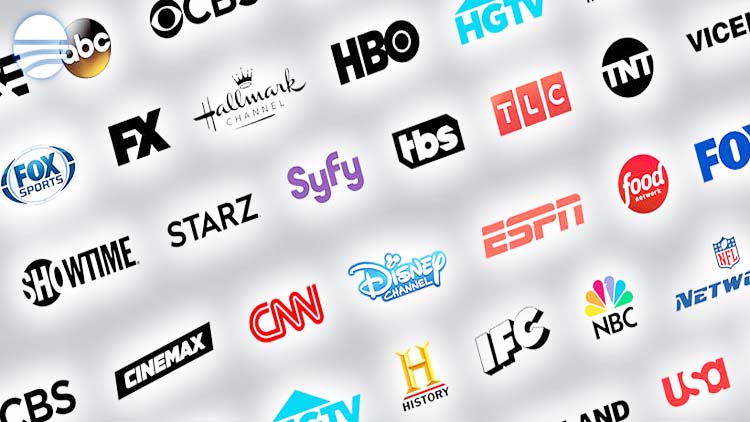In this guide, we will compare online streaming vs traditional cable based on various aspects. Streaming has officially surpassed cable as the most popular way to consume television content in the United States. For many viewers, cable television is considered a bygone era.
With more streaming services available than ever before, a comprehensive analysis is vital. Choosing between cable or streaming may require some thought, especially if your budget is limited. So how to get the most bang for your buck?
Let’s figure it out!
Difference Between Cable and Streaming
Before you get into the pros and cons, it would help to determine the difference between streaming and cable to make a more informed choice.
Cable TV dates back to the 1950s and is a well-established form of television. This traditional method uses coaxial or optic cables to transmit shows in the form of data.
Its sturdy infrastructure often makes it a reliable choice for many users. Cable television signals use only a fraction of the bandwidth available for coaxial connections, leaving room for other digital services such as internet connections.
On the other hand, streaming does not require cables. As long as you have Wi-Fi, you can access streaming services anywhere in the country. These services can be accessed from a variety of devices, including smartphones, tablets, smart TVs, and devices such as Roku.
Unlike cable television, streaming services are often offered on a subscription basis, with users paying a monthly fee to access the service. While the variety available on cable TV is limited they typically offer a wide variety of channels, including local channels, sports channels, and premium channels such as HBO and Showtime.
Streaming services usually offer a wide range of content that includes movies, TV shows, and original content.

Why Choose Cable TV?
Stability
Stability is one of the main advantages of cable TV and its advantage over streaming. When the Wi-Fi signal is weak, viewers experience buffering and lag in their Netflix shows.
With cable TV, there are no such restrictions when it comes to watching a cable TV program. You can almost always watch your favorite TV shows without any problems.
Bundle Deals
Most cable companies offer packages and subscriptions that include additional services in one package. For instance, popular Internet Service Providers (ISPs) offer bundle deals with Internet packages.
You can explore several options, such as Cox cable, to get the best fit for you. Additionally, your cable provider may also provide a modem, cable box, and additional equipment to complete the package.
These packages are relatively cheaper when compared to a monthly bill using different providers or subscriptions to cable TV, Internet, and telephone.
Live Streaming
On-demand streaming services such as Netflix do not offer live coverage of your favorite live events or other live programming. So, if you want to watch the Olympics or the Super Bowl, a Netflix subscription won’t help.
Traditional cable television has a dynamic, precise program schedule and the ability to quickly and easily switch between live broadcasts.
You turn it on and stream available content whenever you want to watch a particular show. This type of platform is ideal for watching sports, live streaming, or news.
Why Choose Streaming Services?
Cost Savings
With careful service selection, the cost of streaming platforms is still far less than many cable/broadband packages. You have many customization options. You can upgrade and cancel a subscription package with one click if it no longer meets your needs.
Subscriptions are usually monthly contracts that can be canceled online and automatically terminated before the next billing date. Additionally, streaming providers usually don’t have as expensive subscriptions as cable companies.
Flexibility
It’s a very competitive market and there are several plans in different price ranges. With cable TV, you can only watch shows and movies on a scheduled basis.
And with a TV streaming service, you can pause a show and come back later, rewind to a missed part, and watch your old favorite shows again. This flexibility makes streaming so popular.
On-demand Variety
Both streaming and cable TV offer a variety of TV shows and movies. The main difference is that streaming services allow you to watch on-demand content, while cable TV allows you to watch available programs.
Additionally, each streaming platform has its perks. For instance, Netflix is the best option for watching new and old series and movies on demand, while Hulu is a great choice if you want to watch live streams.
Bottom Line: Online Streaming vs Traditional Cable
The biggest advantage of streaming services is that you can completely customize your viewing experience. If you’re willing to pay for this perk, you can watch TV shows and other content for hours without ads.
On the other hand, opting for a streaming-only service often means no live streaming, which can mean being late on catching up on a new episode and no late-night social media conversation.
However, you should determine your budget and how many people or devices you want to accommodate. When you’re on a budget and family members have different entertainment preferences it is best to choose by considering all aspects and not just what is trending.
